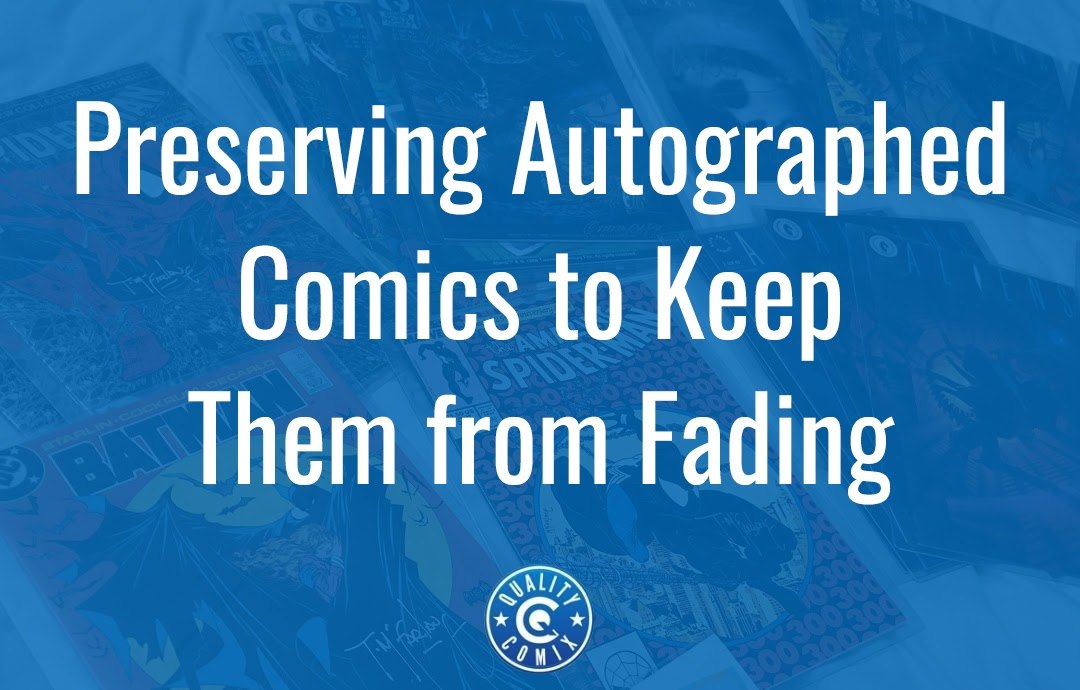
Light is the enemy.
The sun puts out visible light, but more than that, it puts out ultraviolet radiation. These UV rays can do a lot of damage, and you've almost certainly experienced it yourself in the form of a sunburn.
In comics, paper is just covered in different inks, and UV rays damage it in different ways. Different colors of ink absorb sunlight differently, destroying reds and greens while leaving blues and blacks behind for a time. Eventually, even those will fade.
More than just the basic printing, the inks used in pens don't saturate as much, and while a black marker may seem black, it's often actually just a very, very dark red… which fades under sunlight exposure, first to red or brown, then to gray, before eventually disappearing almost entirely.
When you have comics, especially autographed comics, you want to prevent this fading from happening. The question is, how?
Light is the enemy, so you fight the light.
Table of Contents
Option 1: Bag and Board
The first option, and the one that is by far the simplest, is your standard comic bag-and-board combo. A backer board – acid-free archival cardboard – provides stiffness and support to the comic to prevent it from curling or bending in storage and to minimize the chances of minor impacts and other hits damaging it.
Meanwhile, the bag prevents dirt, dust, grime, and chemicals from getting into the comic, on its surface or in the pages. They don't all protect against UV light – you need mylar bags specifically for that – but they can protect against dirt, humidity, and minor abrasions.
Some people don't like using bags and boards to secure autographs. There are three main reasons for this.
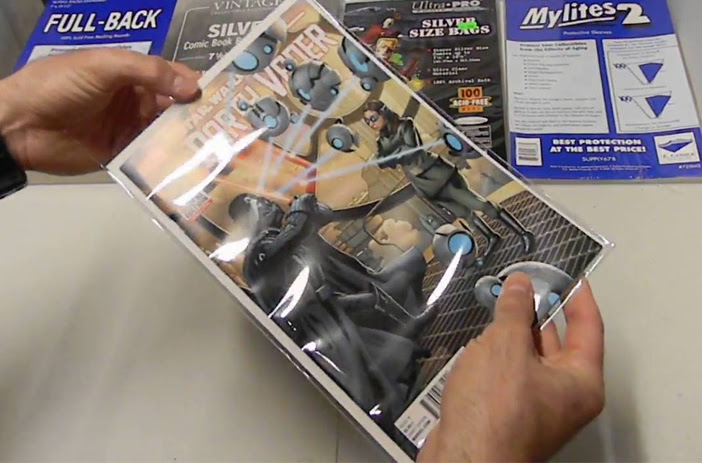
The first is that, as I just mentioned, your standard bags and boards are not UV-resistant. If you want your comic out for display, you want it to be enclosed in something that can protect it from UV light, and your basic polypropylene bag isn't going to do that for you. A mylar bag can, though they are more expensive, thicker, and can distort the colors of the comic because they aren't usually perfectly clear.
One important note here is that even mylar isn't 100% UV-resistant. It's something like 95% or 99%, depending on the kind of mylar product you buy. This means your comics and autographs can still fade over time; it will just take a much longer time.
The second reason why a bag and board isn't the ideal storage solution is because it can still expose the comic to minor friction. The bag isn't completely right and secure to the comic – since slipping it in and out of something too tight could damage it – so there's always some play and motion to the comic. If the comic's cover is glossy, and the pen used to sign it wasn't meant for glossy paper, the ink isn't actually very well adhered to the paper. The plastic of the bag can rub at it and rub it away, or in some extreme cases with pressure, lift the ink away, damaging the autograph.
The third reason is comparatively minor; it just doesn't stand out. Collectors are used to seeing bagged-and-boarded comics all over, and nothing about a comic in a simple sleeve screams "noteworthy" compared to a slab or a professional display case.
The one way that a bag and board can be more durable and protective for your autographed comics is when you combine it with the last option on this list and store it in a cool, dark place away from sunlight. It's not very fulfilling to keep your autographed comics in a dark box away from light or sight, but it's the best way to keep it preserved. That can be pretty important if you want to sell the comic later.
Option 2: Slabbing
The second option is to slab the comic.
Comic slabs are harder shells and are generally much more protective than bags and boards. They're inherently stiff, and the comics are usually still inside an inner liner. The harder outer shell tends to be more protective as well, and slabs are often thick plastic designed to be very UV resistant, up to 99%.
One important thing to note here is that I'm saying slabbing your comics, not grading your comics.
Why?
Grading is a tricky subject when it comes to autographs.
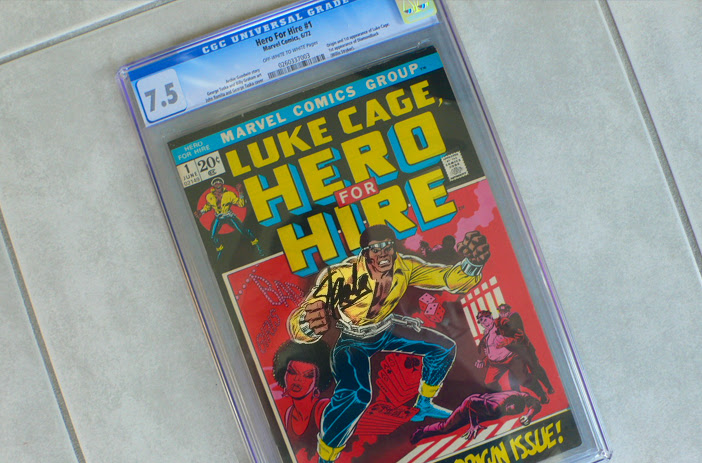
CGC won't authenticate autographs in most cases. They will only authenticate a signed comic if they have an agent there in person to witness the signature, and you pay them for the service plus the grading at the same time. This makes it both inconvenient, impossible for older autographs, and much more expensive than just getting the comic signed, which reduces the value proposition quite a bit. It's one thing if you have to pay $30 for a signature, then can throw it in a bag at home; it's quite another if you have to pay $150 for a signature + authentication + grading + slabbing + shipping + insurance, wait weeks for it to arrive at home and hope it's not damaged, and so on.
Most people expect a blue label from a comic graded by CGC, and the other label colors aren't as desirable, except for the occasional signature series yellow label or one of their noteworthy pedigree labels.
A signature that wasn't witnessed can't be authenticated, so CGC gives it a green label. Green labels are also used for damaged comics, so obviously, many people don't like them.
Slabbing, on the other hand, doesn't require grading. You can buy a slab yourself or a slab-like showcase and put your comic in it for display purposes quickly and easily. These are more protective and more durable than a bag and board, and the greater UV resistance means they're nicer to display.
Option 3: Museum Glass Displays
The third option is to build a whole display for your comics. I've seen this in both single-comic forms and in larger displays.
All you need is a shelf, display case, frame, or shadowbox. Something you can put your comics in for display, where you can see and admire them. You can keep them bagged and boarded, or you can put them in slabs; it doesn't really matter.
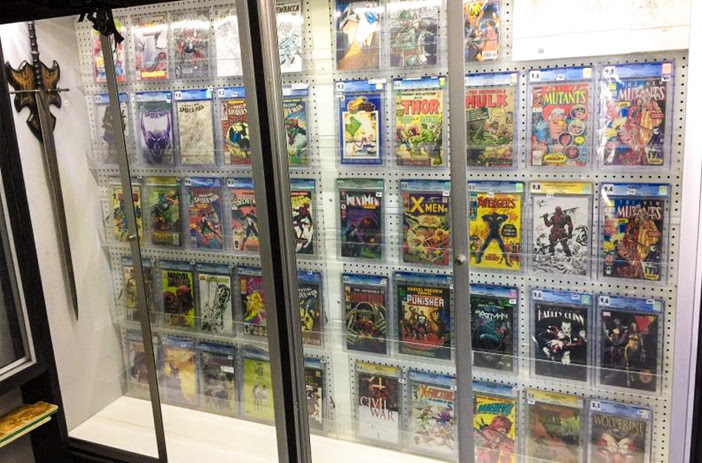
What matters is that the display case or other method you use is protected by museum glass. Museum glass is a layered form of glass with several layers and coatings that make it UV-protective. You can buy museum glass sheets and fabricate a system yourself, you can buy museum glass display racks (though they can be quite expensive), or you can buy coatings to put on standard glass to make them more UV resistant, though the application can leave bubbles behind so you need to be good at it.
These are fantastic for displaying any kind of collectible that you want to keep isolated from the environment and protected from sunlight but still want to see it.
Option 4: Cool and Dark Storage
The best way to keep a comic protected from light is to keep it in a cool, dark, enclosed space. Whether you put it in a slab or bag is up to you, but the important part is to keep it away from UV light.
Of course, many of us actually want to see our prized, autographed comics, so filing them away in dark boxes in the storage room isn't exactly a great option.
Fortunately, there's one option you can get the best of all worlds. Slabbing or otherwise protecting your comics however you like and building a shelf or display case for them, all you need is an internal room with no exposure to sunlight. Even indirect sunlight can be bad, but an internal room with no windows? That's fine.
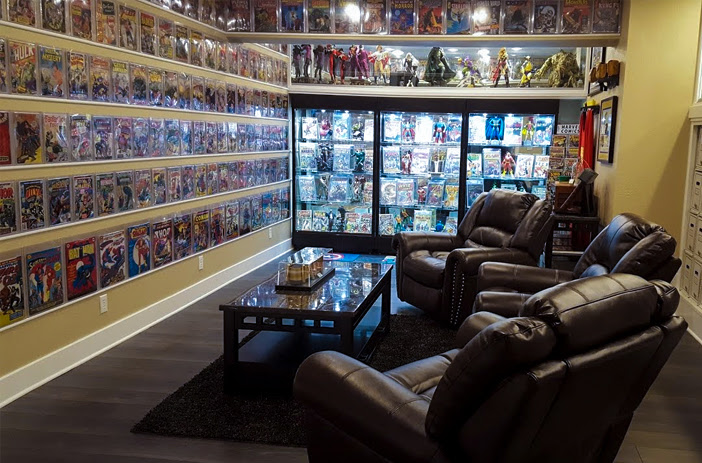
There's one caveat, and that's to make sure you have LEDs as your light source. Fluorescent lights also give off UV rays, and while they won't be as damaging as direct sunlight, they can still fade comics over time. A nice display case indoors, away from sunlight, and lit by LEDs can be a wonderful option.
What About Clear Coats and Other Options?
When you read about preserving colors and autographs on collectibles, you'll find all manner of people offering their ideas, many of whom have no idea what the physics are behind why autographs fade. Sometimes, they have the right idea, but often, their suggestions are terrible. Here are some of the ideas we've seen suggested before:
- Put a coat of Mod Podge over the signature or cover as a sealer.
- Use a clearcoat spray to seal the front cover.
- Put a strip of clear packing tape over the signature to preserve it.
- Use a heat-wrap cover for the collectible, like lamination.
- Periodic restoration of the signature.
All of these are terrible ideas. So, let's talk about why.
First, things like Mod Podge and clearcoat sprays are chemicals that put a layer of varnish or sealer over the top of a surface. While they dry clear, they irreparably damage a comic. The chemicals soak into the paper, are impossible to remove, and will always be considered damage by any grading company or collector.
More importantly, oftentimes, these chemicals are not meant for this particular kind of use or material and can cause inks to run, paper to warp and disfigure, and can stick pages together. While technically, the signature would be preserved from some kinds of damage, like abrasion, things like Mod Podge and clearcoat are not actually UV resistant unless you get specialized (and much thicker) versions, like Mod Podge Outdoor or a vinyl clearcoat.
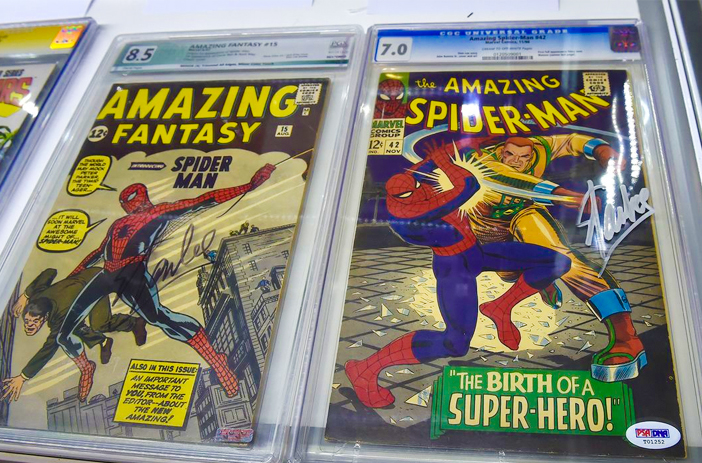
Things like tape have similar issues; they're a coat on the surface of the comic that does not provide protection from ultraviolet light, just physical disruption. They also cannot be removed without irreparably damaging the comic and are thus considered damage themselves. Even if you could remove something like tape, it would very likely take the signature with it.
Plus, a strip of tape over a comic's cover just looks awful, no matter how you slice it.
Heat-sealed wrapping is a little better, but only a little. It's like any other bag-and-board system, except instead of having a strip of mild adhesive to seal the bags, they can be sealed with a bit of heat to fuse the plastic layers together.
The biggest issue with this is that they can't be opened and reused. Most bags and boards exist for temporary storage, and the comics can be removed, repacked, or even slabbed without risking damage to the comic. Sealing something in fused plastic can damage it if you misapply the heat, risks damage if you have to cut or tear it back open, and generally becomes an inconvenience at best. Plus, if you store the comic in a heat-sensitive material and you live in a place where it gets very hot, or the comics end up in a hot car while in transit or storage, or direct sunlight with a lensing effect through a warped window or any number of other things happen, it can damage that outer wrap or even fuse it to the comic itself.
And restoration, well, that's fine if all you want is a signature you can look at and remember the time you got the comic signed, but if you try to sell it, a restored signature might as well be a fake signature. Even professionals won't restore an autograph on something like a comic; that's mostly limited to things like centuries-old paintings.
When the Time Comes to Part Ways with Autographed Comics
My general advice is that autographing comics isn't a sure-fire way to increase their value, but it's definitely a good way to increase their sentimentality. It's something you should do as a collector for comics you like, artists, writers, or creators you love, and a collection you want to keep. Getting comics signed isn't going to skyrocket the number of zeroes on the price.
That said, there may come a time when you want to sell autographed comics. If you had the autograph authenticated, great! Otherwise, be prepared to take a hit, as no one will be able to tell whether or not the autograph is authentic without some form of proof.
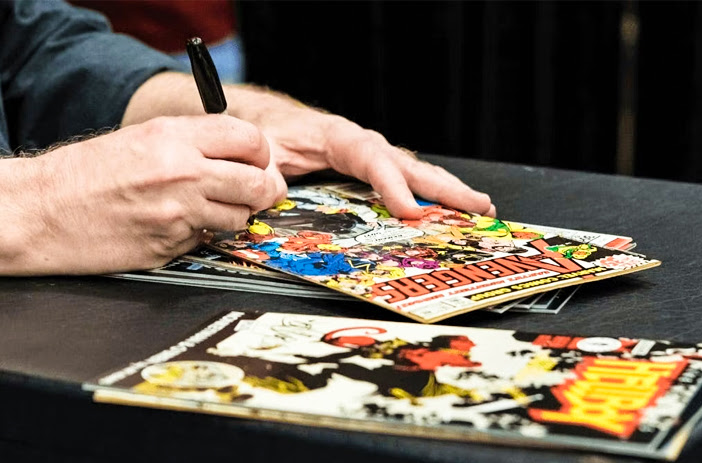
Either way, you can sell them to us. As a world leader in high-value comic sales, we're always in the market for unique, cool, valuable comics to buy. All you need to do is click here and get started!

 Brent Moeshlin
Brent Moeshlin
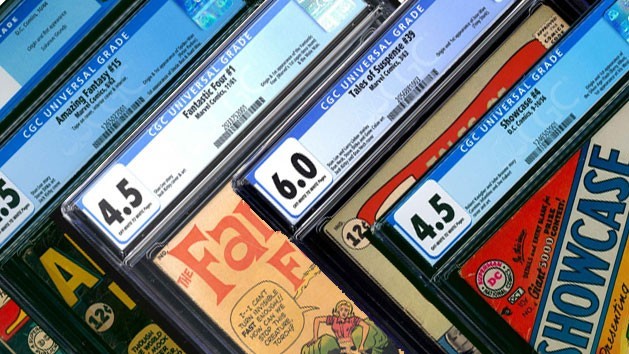

![[Guide] Where is the Best Place to Get Your Comics Graded?](https://www.qualitycomix.com/images/size_f/news-000079.jpg)